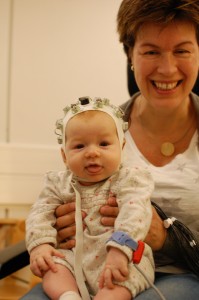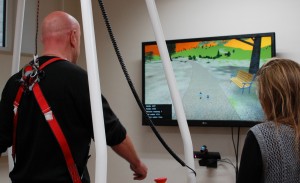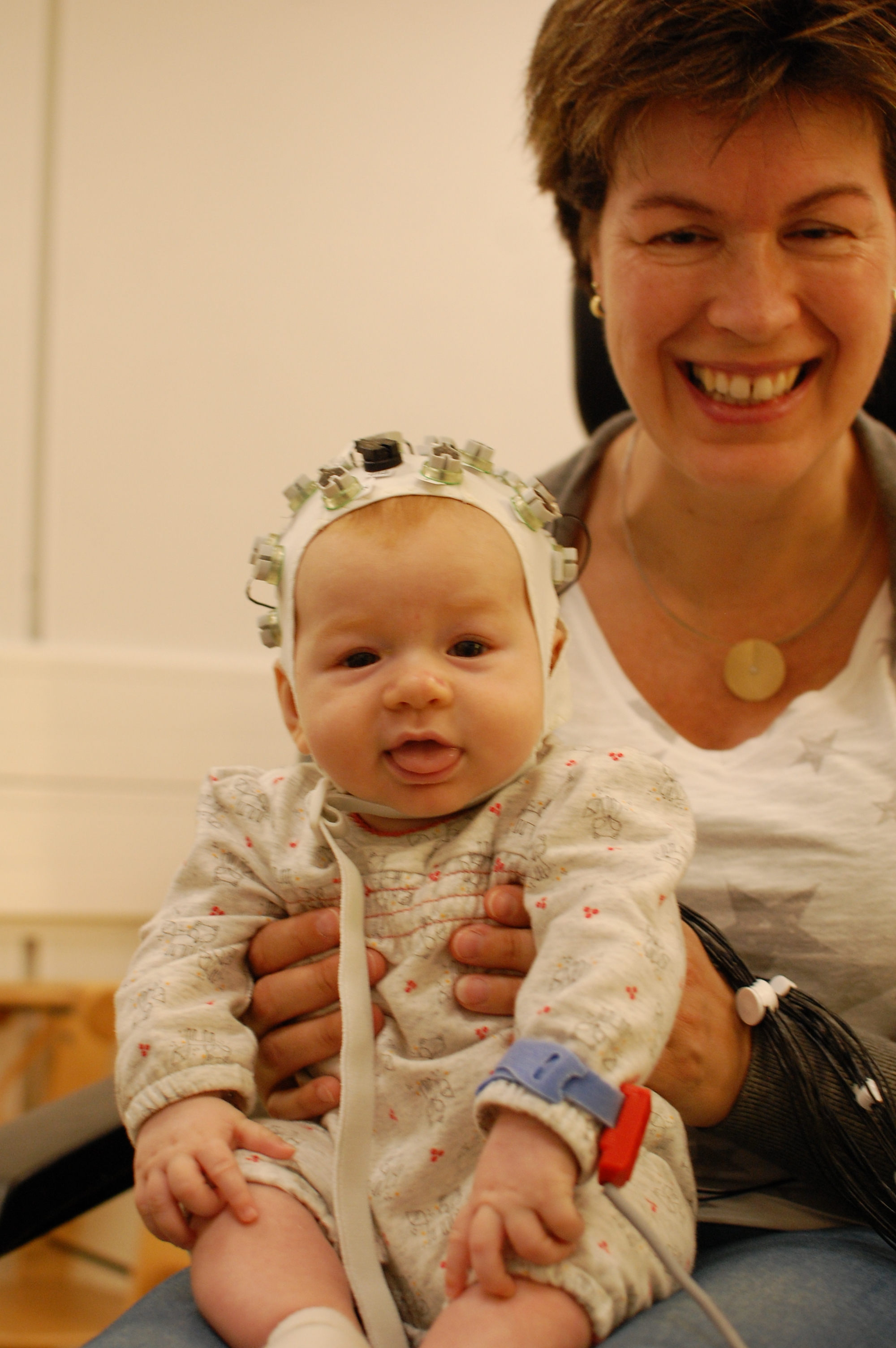This post is also available in Dutch.
There are about 64 years of age between Baby Zoë and Mr. Lijn, but today both of them are participating in scientific research. One of them has only just been born and still needs to learn how to walk and talk while the other has recently retired and has been walking and talking for decades. Today, we followed both participants during their visit at the Donders Institute.
Most psychological experiments are conducted with university students as participants. There are some questions, however, that we cannot answer by studying only this specific group of people: “How does a baby learn to recognize him or herself?” or “How does a young child learn to walk?”, as well as, “What can we do when walking becomes challenging at an older age?” Researchers at the Donders Institute and the Radboud UMC in Nijmegen are very eager to answer these questions.
 Baby Zoë. Picture taken by Ricarda Braukmann
Baby Zoë. Picture taken by Ricarda Braukmann
Research on early age self recognition
As adults, it seems trivial that our actions can have effects on the world around us, but are infants also aware of this at an early age? Baby Zoë is 3 months old and together with her mom she is participating in the study of Dr. Marlene Meyer who is trying to understand the early development of self-awareness. Adults process self-produced sounds, such as when we ring a bell, differently from sounds produced by other people or computers. Meyer investigates when this dissociation develops in young infants. Zoë’s mother is happy to participate with her children: “It is great to contribute to science and enhance our understanding of early child development.” Of course, Zoë cannot yet tell us herself, but her sweet smile suggests that she enjoys the visit to the Baby lab as well.
 Mr. Lijn. Picture taken by Ricarda Braukmann
Mr. Lijn. Picture taken by Ricarda Braukmann
Fall prevention in the elderly
Han Lijn (64) agrees that being a participant is fun. He is taking part in the research of Freek Nieuwhof and Jessica Hubbers. These two scientists study the elderly population between 60 and 94 years of age. Their goal is to prevent falls by training the individual’s walking pattern, condition and cognitive abilities. As the chances of falling begin to increase at 65 years of age, and falling can lead to severe injuries, Nieuwhof and Hubbers work on fall prevention training. “I have never fallen so far, but I think it is great to be able to prevent it”, explains Han Lijn, who likes to go for long walks in his free time. At the moment he is visiting the lab three times a week for his training on the treadmill. On a special screen he can study the route he will be walking. On the same screen, his own feet are displayed during the training which enables him to plan his steps and adjust his walking pattern. The difficulty of the session can be manipulated by placing obstacles on the route. “In the end, we hope that the training improves participants way of walking and reduces the risk of falling”, explains research assistant Jessica Hubbers. Han Lijn enjoys participating: “The research is great for my condition and helps me to keep my daily rhythm now that I have retired.”
More information
Research of Dr. Marlene Meyer
Research of Freek Nieuwhof en Jessica Hubbers
October is the month of fall prevention
This blog is written by Ricarda Braukmann. She is a PhD candidate at the Baby Research Center where she studies the social cognitive development of you infants.
